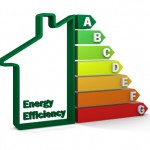 From 1 April 2012, domestic installations must be accompanied by an Energy Performance Certificate (EPC) with a level D or above. Where a domestic property does not meet these energy efficiency requirements, the Solar PV installation may receive a lower tariff (9 pence). What does this mean for consumers looking to get solar panels after April 2012?
From 1 April 2012, domestic installations must be accompanied by an Energy Performance Certificate (EPC) with a level D or above. Where a domestic property does not meet these energy efficiency requirements, the Solar PV installation may receive a lower tariff (9 pence). What does this mean for consumers looking to get solar panels after April 2012?
Basically the EPC requirements pushes households to focus on the low hanging fruit of improving their energy efficiency when installing solar panels on their roof. A rating of D is already achieved by about half of the houses according to the government, so if you have a house built in the last 20 years you are probably already meeting the D standard.
If you have measurements like a condensation boiler, wall insulation and double glazing your house is also most likely to already meet the requirements. Your solar panels also do count towards the energy efficiency rating.Newer houses (e.g. build after 1990) are also a good indication of having an EPC rating of at least D, although it always needs to be assessed by a qualified professional. There are three outcomes of the EPC test:
- EPC Level D achieved: you can install solar panels and receive 21 pence
- EPC Level D almost achieved: you can install panels, do the retest of EPC and if the rating is achieved you’ll receive 21 pence
- EPC Level D not achieved: you can decide to leave it for now, or improve your energy efficiency (without cost through the green deal). Alternatively you can accept a lower rate of 9 pence
Normally the EPC is required before the decision to install solar panels is made, and it comes at a cost of the EPC is around 35-50 pounds. In most cases installers already include it clearly in their quote, and sometimes provide a refund if the D rating is not achieved. Learn more about this on the Directgov website.